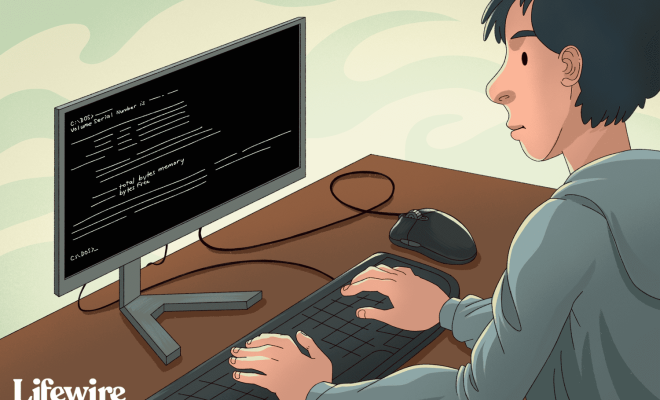The Ultimate, Complete List of MS-DOS Commands

MS-DOS, or Microsoft Disk Operating System, is a command-line operating system that was used widely in the early days of personal computing. Even though it has been replaced by more advanced operating systems, MS-DOS still has a cult following, and many people who enjoy retro computing continue to use it. But to effectively use MS-DOS, you need a good knowledge of its commands.
Here, we present the ultimate, complete list of MS-DOS commands.
1. ASSOC – Displays or modifies file extension associations.
2. ATTRIB – Displays or modifies the attributes of a file or directory.
3. CD or CHDIR – Changes the current directory.
4. CHKDSK – Checks a disk and displays a status report.
5. CLS – Clears the screen.
6. COPY – Copies one or more files to another location.
7. DATE – Displays or sets the date.
8. DEL or ERASE – Deletes one or more files.
9. DIR – Displays a list of files and subdirectories in a directory.
10. DISKCOMP – Compares the contents of two floppy disks.
11. DISKCOPY – Copies the entire contents of one floppy disk to another.
12. ECHO – Prints a message or turns command echoing on or off.
13. EDIT – Starts the MS-DOS Editor program.
14. EXIT – Quits the command interpreter.
15. FC – Compares two files or sets of files and displays the differences between them.
16. FIND – Searches for a specific string of characters in a file or files.
17. FORMAT – Formats a disk for use with MS-DOS.
18. GOTO – Directs the command interpreter to a labeled line in a batch program.
19. HELP – Provides help information for MS-DOS commands.
20. IF – Performs conditional processing in batch programs.
21. MD or MKDIR – Creates a new directory or subdirectory.
22. MODE – Configures system devices such as the display screen, keyboard, and printer.
23. MORE – Displays one screen of output at a time.
24. PATH – Displays or sets the search path for executable files.
25. PAUSE – Suspends processing of a batch program and displays a message.
26. PROMPT – Changes the command prompt.
27. RD or RMDIR – Deletes a directory or subdirectory.
28. REM – Inserts comments in a batch program.
29. REN or RENAME – Renames a file or files.
30. SET – Displays, sets, or removes environment variables.
31. TIME – Displays or sets the system time.
32. TREE – Displays a graphical representation of the directory structure of a drive or path.
33. TYPE – Displays the contents of a file.
34. VER – Displays the version number of MS-DOS.
35. VOL – Displays a disk volume label and serial number.
These are some of the most commonly used MS-DOS commands. With the knowledge of these commands, you can perform a range of tasks such as changing directories, creating and deleting files, formatting disks, and many more.
In conclusion, MS-DOS may no longer be the most popular operating system, but it still has a devoted following. If you are a fan of retro computing, or if you just want to learn more about the history of personal computing, having a good knowledge of MS-DOS commands is a must.






